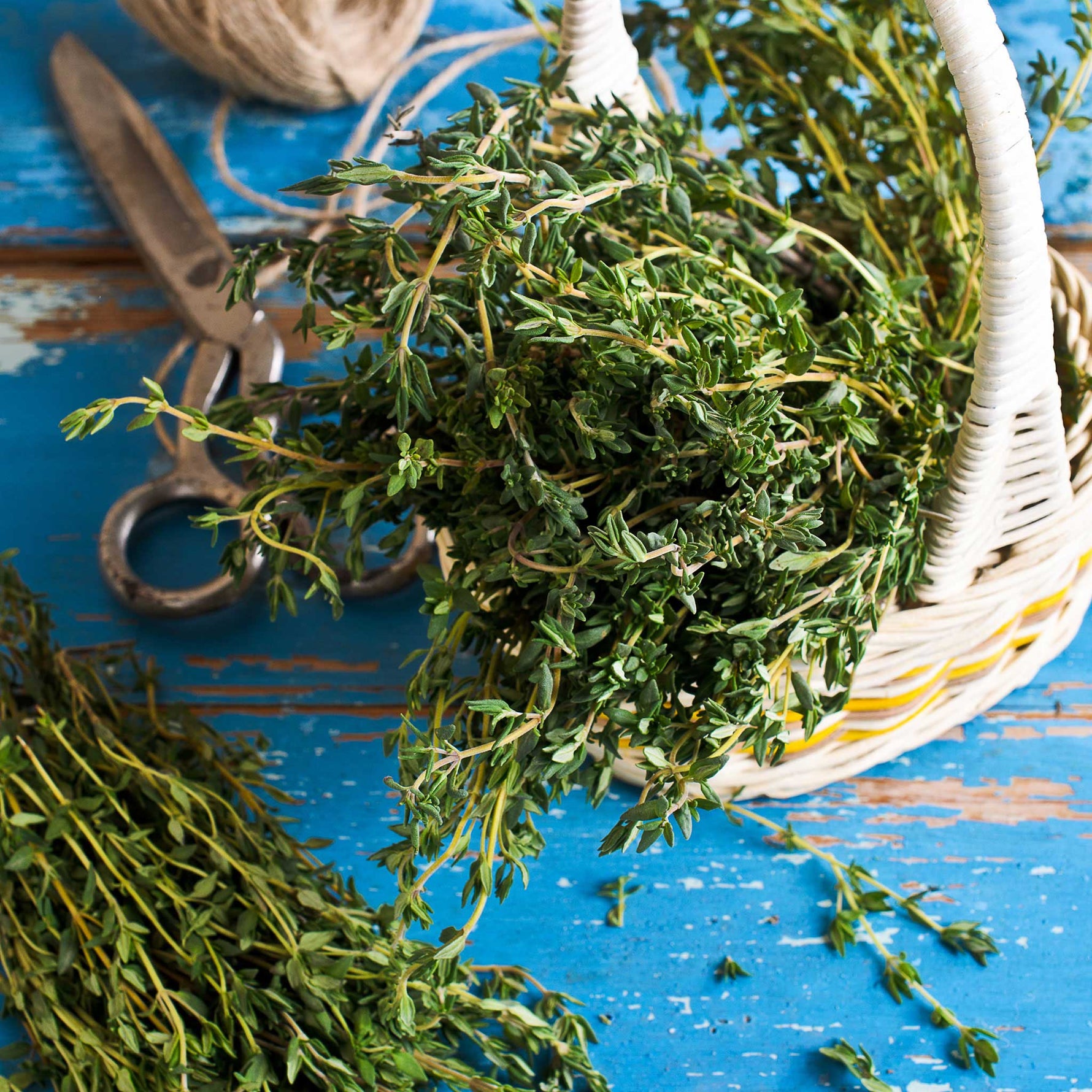
Dharaseeds
Thyme Seeds
Estimated delivery between April 15 and April 18.
Thyme Seeds: A Versatile Herb for Flavorful Dishes
Thyme is a beloved herb known for its fragrant, earthy aroma and robust flavor. These Thyme Seeds produce plants that thrive in gardens or containers, offering a bounty of fresh leaves perfect for culinary use. Whether used in savory dishes, marinades, or as a garnish, thyme is an essential herb in many cuisines, from Mediterranean to French. Thyme’s hardiness and ease of growth make it a perfect choice for both novice and experienced gardeners.
Key Benefits
- Rich Flavor Profile: Thyme imparts a bold, earthy flavor with subtle citrus undertones, ideal for seasoning meats, soups, and sauces.
- Versatile Culinary Herb: Great for use in roasted dishes, stews, grilled meats, and Mediterranean recipes.
- Hardy and Resilient: Thrives in dry, well-drained soil and is drought-tolerant once established.
- Perennial Growth: Once established, thyme will grow back year after year, making it a long-term investment in your garden.
- Health Benefits: Packed with antioxidants, vitamins C and A, and essential oils, thyme is known for its immune-boosting properties.
Variety Features
- Plant Characteristics: Compact, woody shrub with small, oval, aromatic green leaves that are densely clustered.
- Flavor Profile: Pungent, earthy, and slightly minty, with hints of lemon.
- Growth Habit: Low-growing perennial that thrives in full sun and well-drained soil.
- Size: Grows up to 8–12 inches tall, spreading up to 12 inches wide.
Planting Instructions
Planting Season
Best planted in early spring after the last frost or indoors in late winter for a head start. Thyme thrives in moderate temperatures of 60°F–70°F (15°C–21°C).
Planting Details
- Seed Depth: Plant seeds 1/4 inch deep in well-drained soil.
- Spacing: Space plants 6–12 inches apart in rows or in containers.
- Soil Requirements: Prefers light, sandy, or loamy soil with a pH of 6.0–8.0.
- Sunlight: Needs full sun for at least 6 hours per day to flourish.
Care Instructions
Watering
Thyme is drought-tolerant but should be watered regularly when young to establish strong roots. Once mature, reduce watering to avoid root rot.
Fertilization
Apply a light application of organic fertilizer or compost in early spring for optimal growth.
Weeding and Mulching
Weed regularly around thyme plants, being careful not to disturb the shallow roots. Mulch with organic material to keep the soil cool and moist.
Pest and Disease Control
Thyme is resistant to most pests but can be susceptible to fungal diseases in overly wet conditions. Ensure good drainage and space plants adequately for air circulation.
Harvesting
Time to Maturity
Thyme is ready to harvest in approximately 75–85 days after planting. For continuous harvest, pick leaves once plants are well-established.
Harvesting Method
Harvest sprigs of thyme by snipping the top 1–2 inches of growth. For best flavor, harvest before the plant flowers.
Storage
- Short-Term: Store fresh thyme in the refrigerator in a sealed container for up to a week.
- Long-Term: Dry thyme by hanging bundles upside down in a cool, dry place or use a dehydrator. Store dried thyme in an airtight container for up to a year.
Culinary Uses
- Meat and Poultry: Add fresh or dried thyme to roasted or grilled meats, especially chicken, lamb, and beef.
- Soups and Stews: A key ingredient in Mediterranean and French soups like Bouillabaisse or Provencal stews.
- Herb Blends: Thyme pairs well with rosemary, oregano, and sage in herb blends for seasoning.
- Garnish: Sprinkle chopped thyme over roasted vegetables, potatoes, and salads for a fresh burst of flavor.
Conclusion
Thyme is a must-have herb for any garden, known for its hardy growth, flavorful leaves, and culinary versatility. Easy to grow and long-lasting, thyme offers both gardeners and cooks a reliable and fragrant addition to any herb garden. Whether you're growing it for fresh use or preserving it for the off-season, thyme is sure to enhance your meals and your garden.







